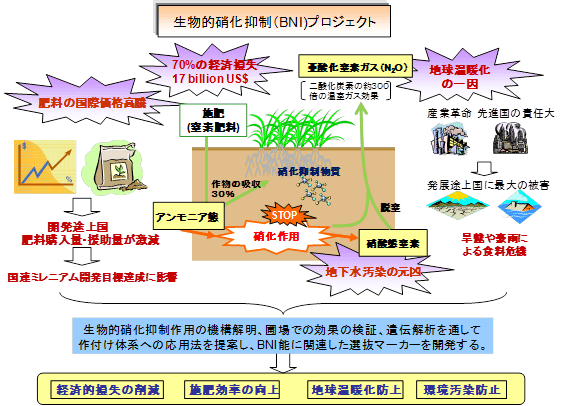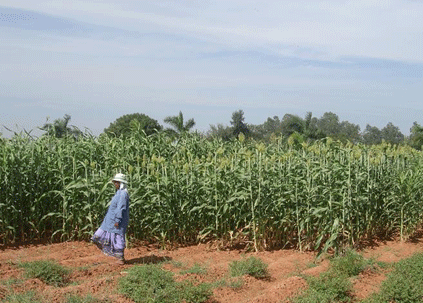Utilization of Biological Nitrification Inhibition (BNI) function for the development of breeding materials and application to cropping systems
Related Research Program
Environment and Natural Resource Management
2021-03-09
農地に施用された窒素肥料の5割から7割は作物に利用されないまま、土壌中の硝化作用によって硝酸として地下水や河川に流亡したり、地球温暖化ガスの一種である亜酸化窒素や窒素ガスとして大気に放出され、環境への負荷となっています。これらの経路による窒素肥料の損失は世界で年間170億ドルにも上るとの試算もあります。ある種の植物は根から硝化細菌の働きを抑制する物質を分泌し、硝化を抑制することが知られており、これを生物的硝化抑制作用(Biological Nitrification Inhibition, BNI)と呼びます。熱帯牧草クリーピングシグナルグラスや作物の中ではソルガムが高い硝化抑制作用を持ちます。本プロジェクトでは、まず生物的硝化抑制作用の機構解明を通じて本機能が効率的に発揮する植物側の条件を明らかにします。次に、これらの牧草や作物のもつ本作用のほ場での効果の検証を通じて硝化抑制作用を利用した輪作等の作付け体系への応用法を提示します。そしてソルガムなどの遺伝資源を用いて遺伝解析を行い、育種へ利用できる選抜マーカーを開発します。以上の研究を通して、窒素肥料の利用効率を向上させて地球温暖化を緩和させる、環境に負荷の少ない農業システムの開発を目指します。


